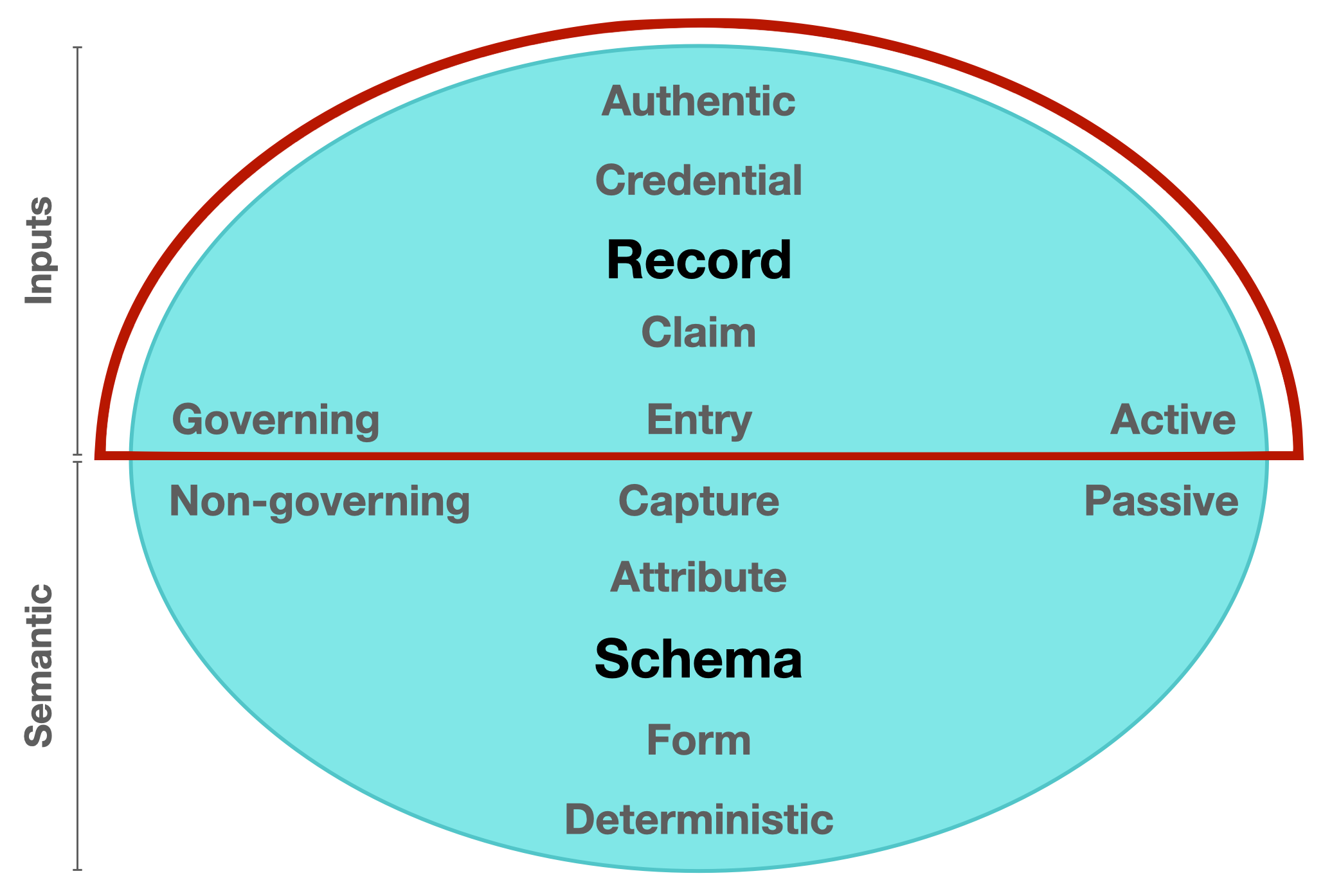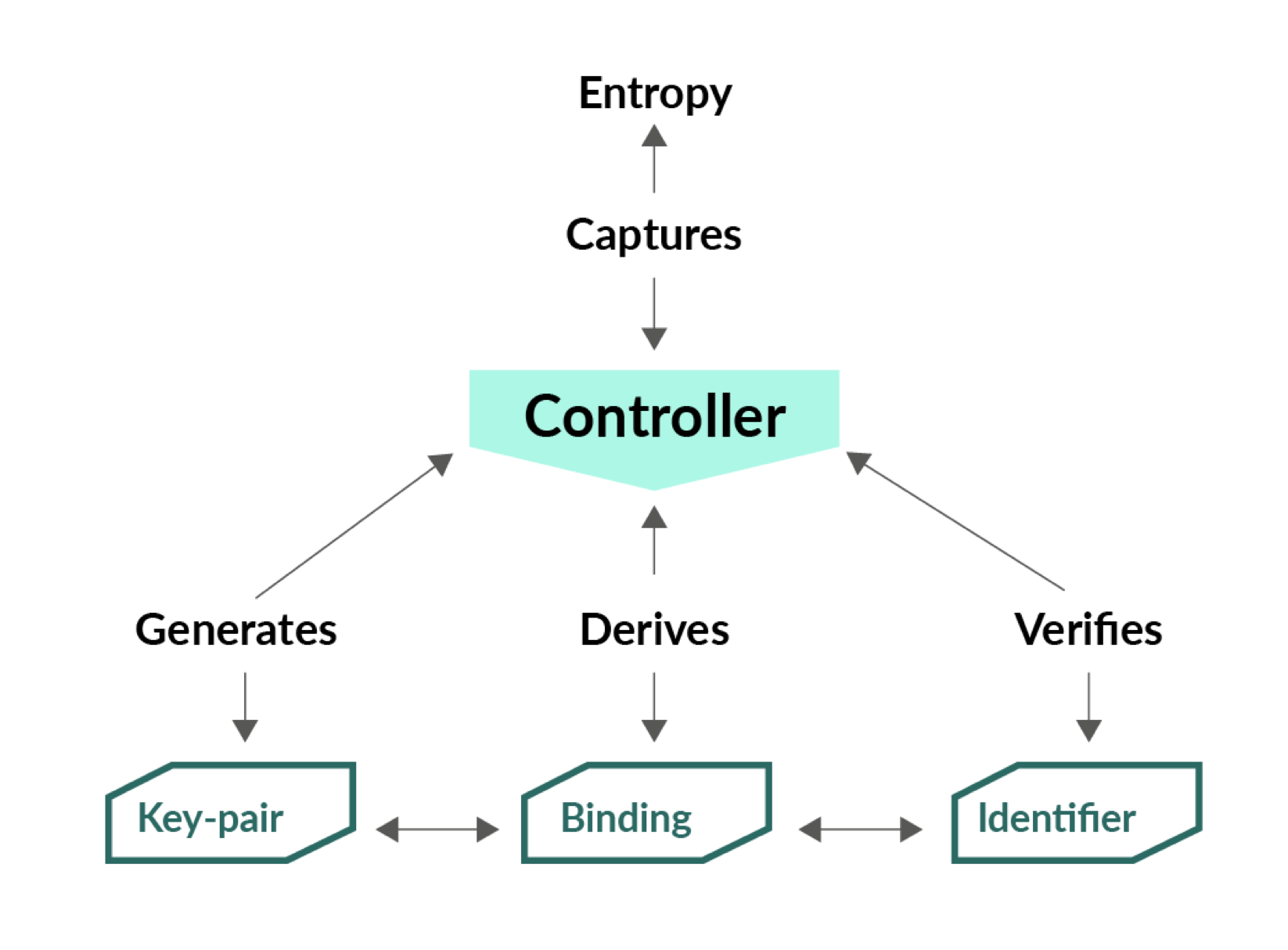Meetings
Weekly on Wednesdays from 09:00-10:00 US PT, 12:00-13:00 US ET, 17:00-18:00 UTC
Introduction
Data entry is defined as the process of inputting data into a computer using devices such as a keyboard, scanner, disk, sensor, or voice. In a decentralized network, data entry requires a signing key in order to establish that inputted data has come from an authenticable source. In the Model of Identifier States, all elements and characteristics of data entry are depicted in the northern hemispherical Inputs domain.
Inputs domain [active] / what is put in, taken in, or operated on by any process or system
Figure 1. Model of Identifier States (Active state). A component diagram highlighting the Inputs domain within a balanced network model.
Scope
The mission of the Inputs group (ISWG-I) is to define a decentralized key management infrastructure that provides self-certifying identifier issuance underpinned by cryptographic one-way functions for Internet-scale deployment. The scope of this sub-group is to define specifications and best practices that bring cohesion to data entry processes and other Inputs standards throughout the ToIP stack, whether these standards are hosted at the Linux Foundation or external to it. Other sub-group activities will include creating template Requests for Proposal (RFPs) and additional guidance to utility and service providers regarding implementations in this domain. This sub-group may also organise Task Forces and Focus Groups to escalate the development of certain components if deemed appropriate by the majority of the sub-group members and in line with the overall mission of the ToIP Foundation.
Chairs / Leads
- Chair: Robert Mitwicki
- Vice-Chair: Samuel Smith
Core Inputs Concepts
Key management refers to the management of cryptographic keys in a cryptosystem. This includes dealing with the generation, exchange, storage, use, crypto-shredding (destruction) and replacement of keys. It includes cryptographic protocol design, key servers, user procedures, and other relevant protocols.
Successful key management is critical to the security of a cryptosystem. Developing and deploying the right key management infrastructure will ensure the highest level of security to enable tamper-resistant interactions between governing entities as autonomous peers in a digital system.
Key Event Receipt Infrastructure (KERI)
KERI is an architecture that offers information uniqueness from captured entropy by compiling the history of all uses or changes to the public/private key pair. This is achieved by universal self-certifying proofs of the binding between the self-certifying identifier (SCID) and the associated public/private key pairs. It is a truly decentralized key management solution offering the strongest possible levels of pseudonymity, ledger-less identifiers and separable identifier assurance bases for all network participants.
KERI is a secure overlay for the Internet where any digital representation of a governing entity can serve as an autonomous self-certifying root-of-assurance. It is a solution that offers secure data control established via self-certifying pseudonymous identifiers. As a standardized global solution for data entry, KERI facilitates sapored data supply chains, enabling a record trail that accounts for the origin of data inputs operated on by any process or system.
KERI resources:
- KERI website - https://keri.one
- KERI whitepaper - https://arxiv.org/abs/1907.02143
Deliverables
- Technical specifications for all core components required within the Inputs domain as defined by the ISWG-I Scope statement.
- Also check out the ToIP Deliverables document for high-level deliverables of the Trust over IP Foundation.

